SEO
Deciding if (And How) to Target a Keyword
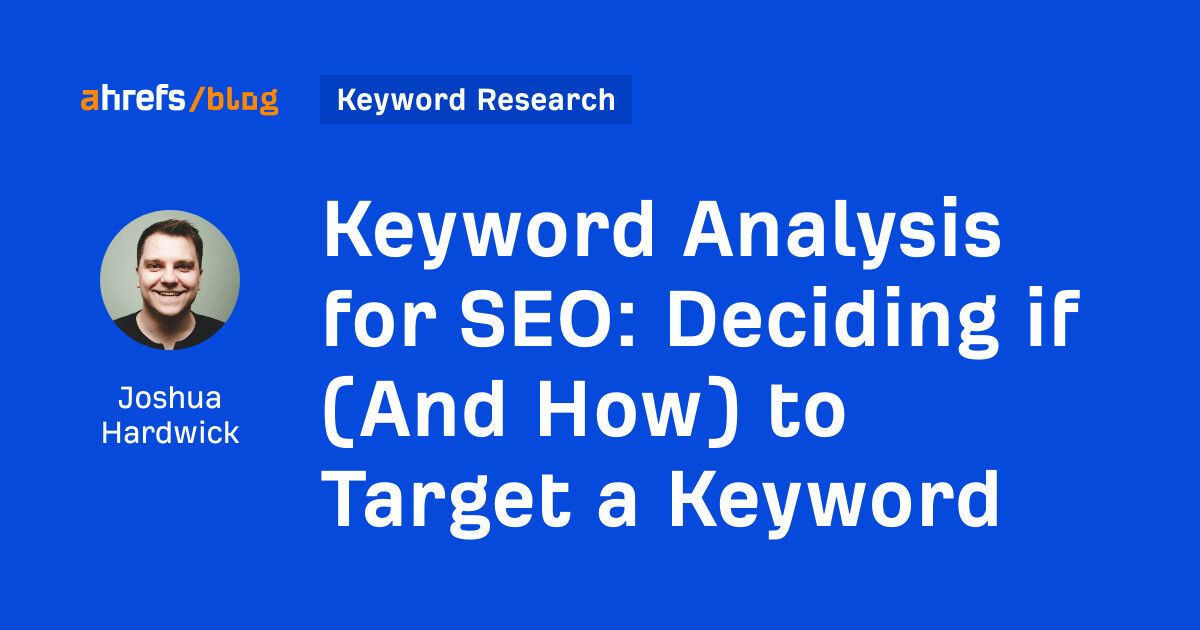
If you’re choosing keywords based on search volume alone, you’re making a mistake. You also need to consider whether the keyword makes sense for your business and whether you can realistically rank for it.
Here’s the process:
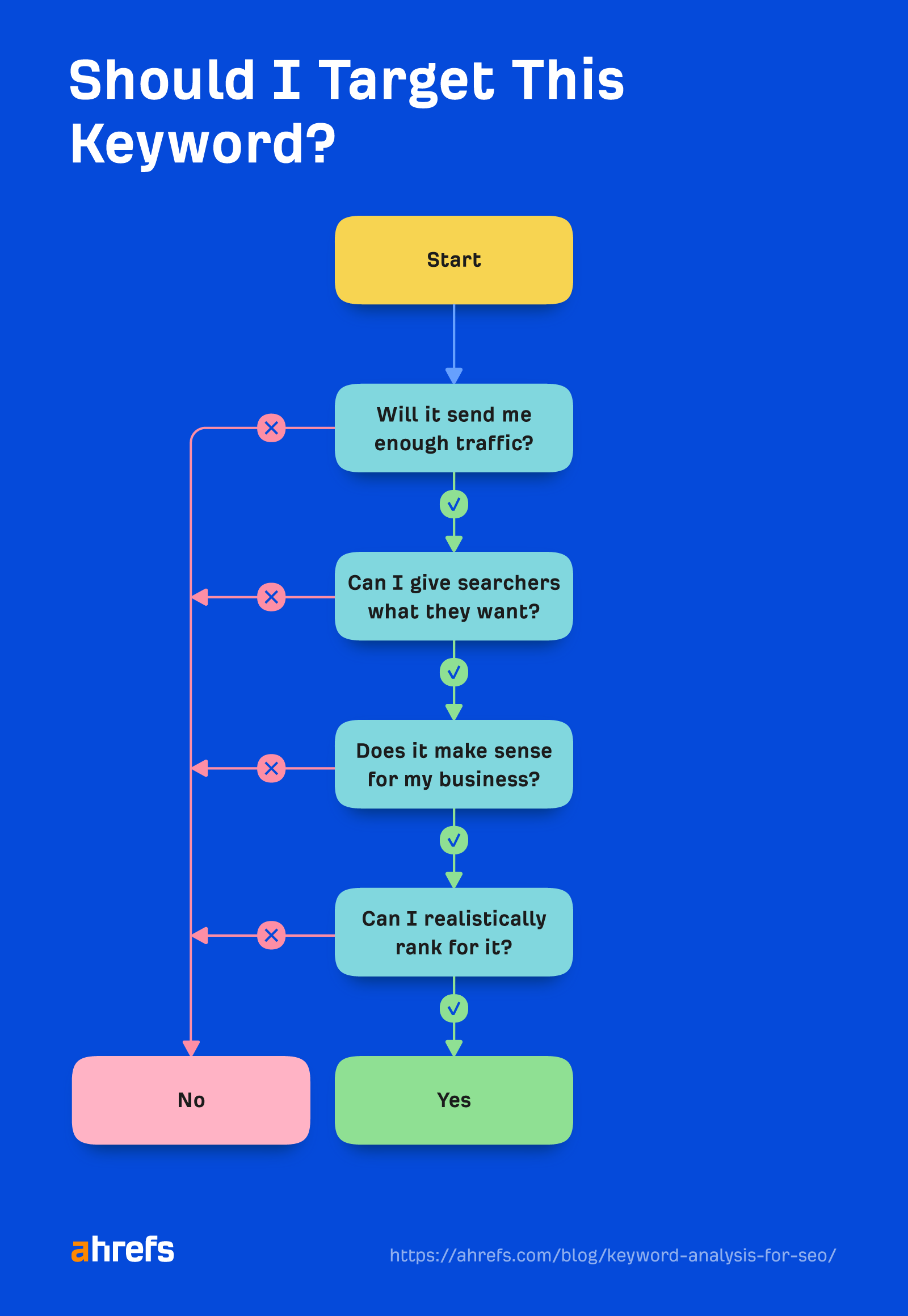
Let’s go through the steps in more detail.
People usually rely on search volumes for this, but they can be misleading.
For example, “pheasant breast recipes” gets an estimated 1.9K monthly searches in the U.S. But the top-ranking page gets far less traffic:

It’s the opposite for “backlink checker.” The top-ranking page gets an estimated 27K monthly visits despite the keyword having only 5.9K monthly searches.

Here are a few reasons why this can happen:

What’s the solution?
Use the top-ranking page’s as a proxy for traffic potential instead of search volumes.
If you’re an Ahrefs user, the Traffic Potential (TP) metric in Keywords Explorer tells you this. You can even sort and filter keyword ideas by TP to make sure you focus on keywords that are likely to send you decent traffic.

If you’re not an Ahrefs user, plug the top-ranking page’s URL into our free traffic checker.
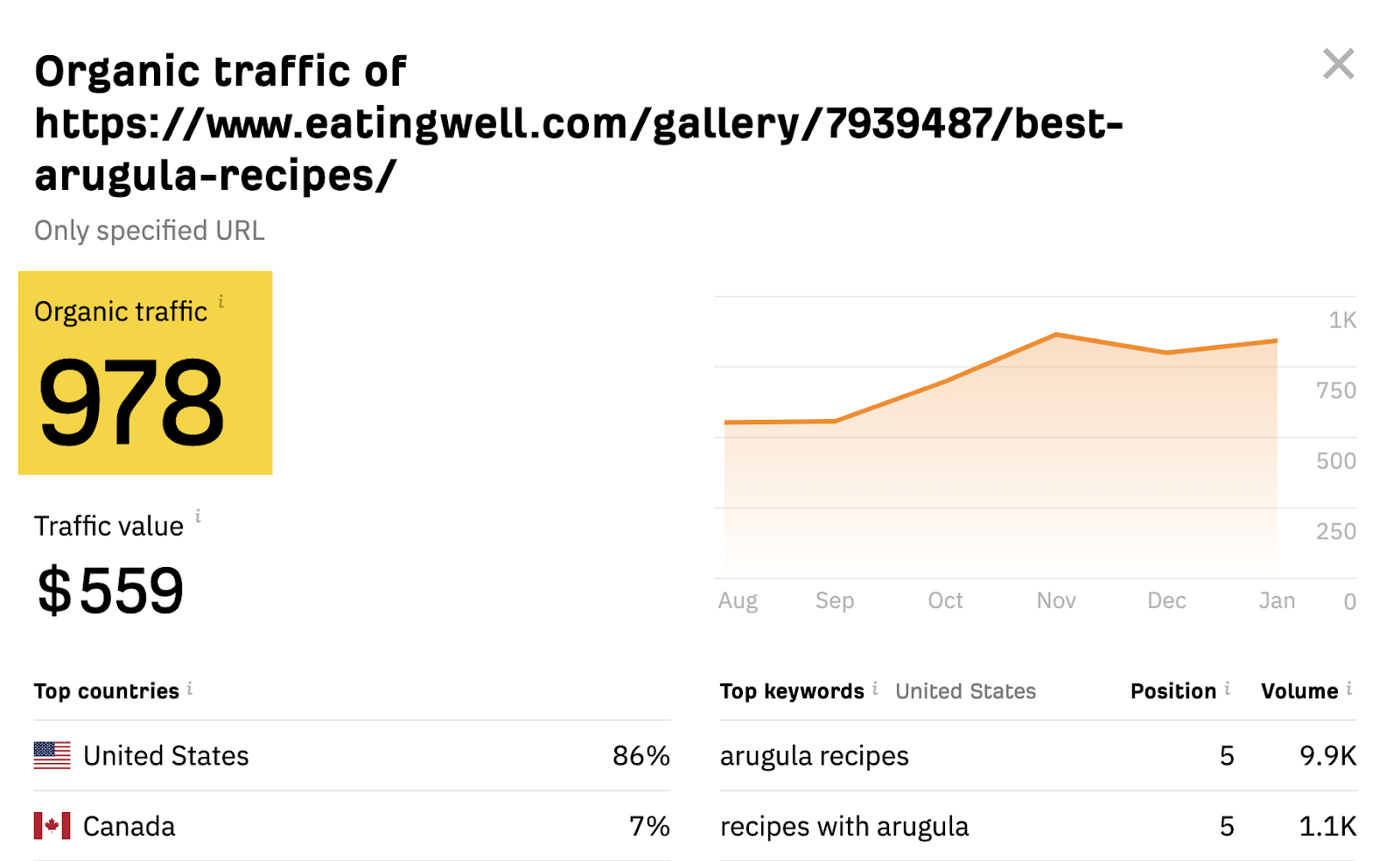
Tip: check the search volume trend
For example, Keywords Explorer shows that searches for “how does wordle work” are declining:

This is echoed in Google Trends:

Google wants to rank the type of content that searchers are looking for. Unless you can create that, your chances of ranking on the first page are slim to none.
Here are five common content types and the resources you’ll need to create them:
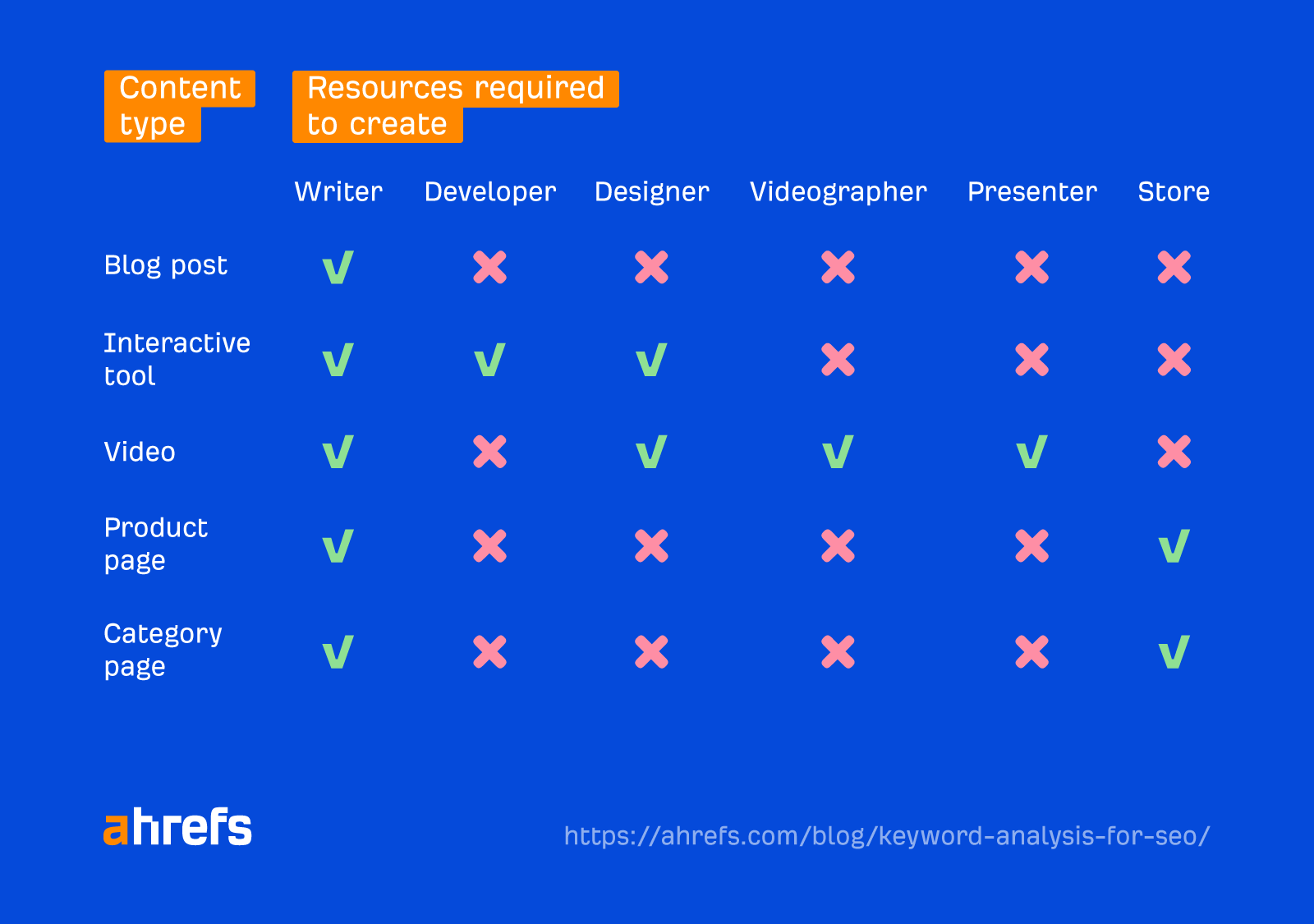
How do you know which one searchers are looking for?
The answer is pretty obvious for some keywords. For example, people searching for “loan calculator” clearly want an interactive tool, while those searching for “buy homepod mini” want a product page.
If it isn’t obvious for your keyword, the first page of results usually paints a pretty good picture.
For example, all first-page results for “days between dates” are interactive calculators:

This means that unless you have access to a developer and designer, you can’t create what searchers want and will struggle to rank.
On the other hand, most first-page results for “excel difference between two dates” are essentially blog posts:

This means that all you need is a writer to create the kind of content searchers want.
Tip: always pull unpersonalized search results
If you’re using our SEO Toolbar, click the extension icon in your browser, toggle “SERP tools” on, then choose a location in the “Local search simulator” section.
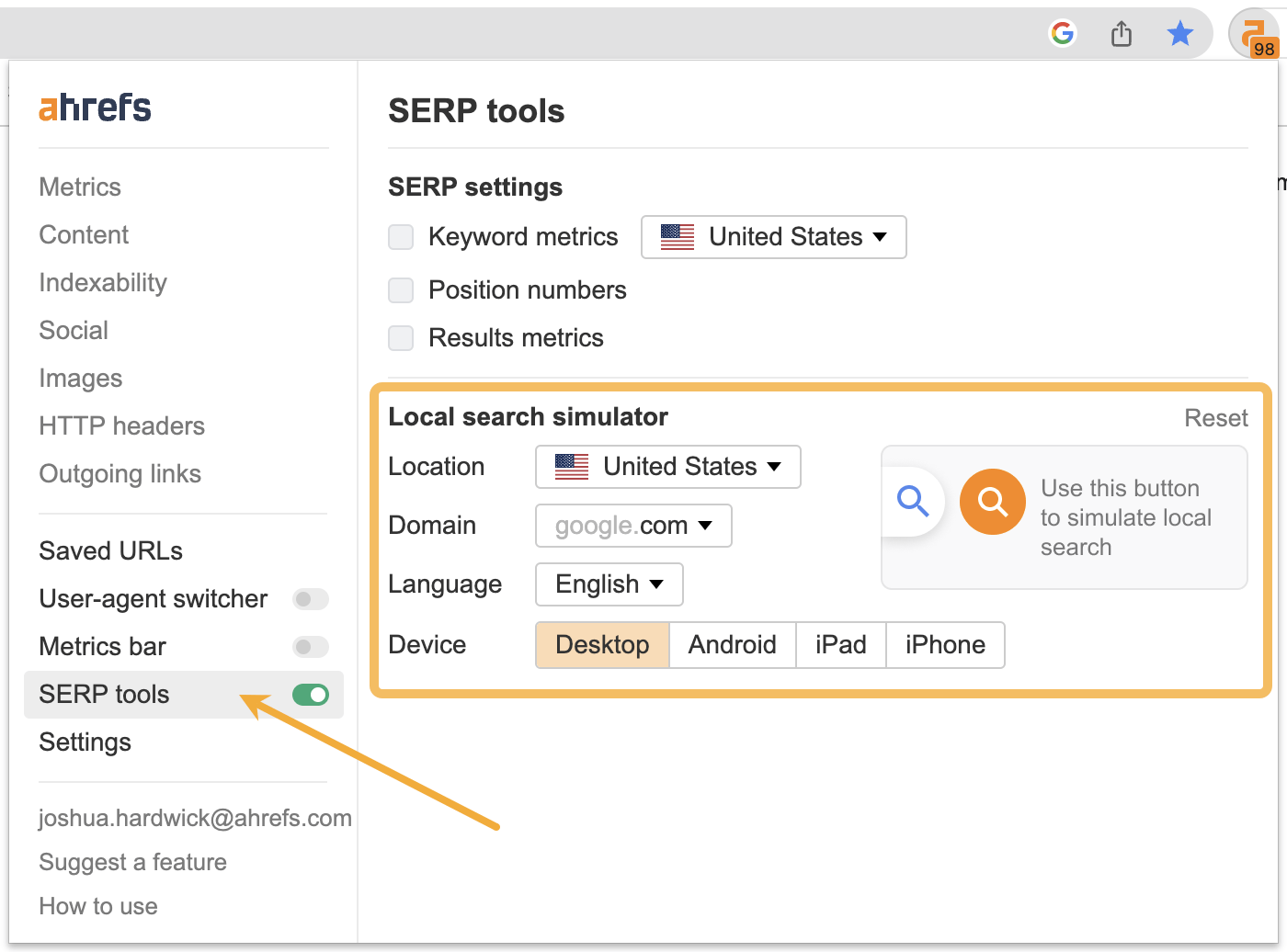
If you’re using Ahrefs’ Keywords Explorer, choose a country from the dropdown.
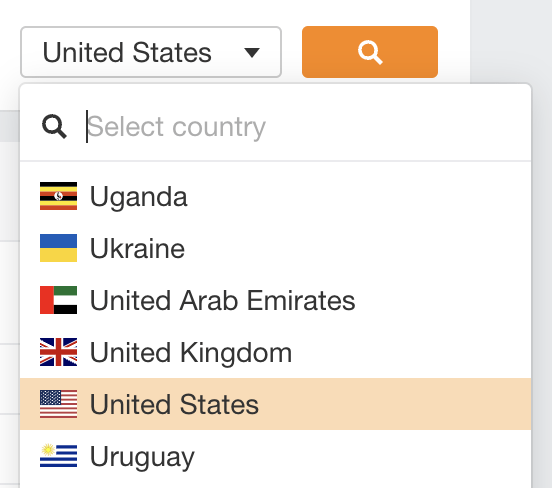
If you ranked the type of content searchers are looking for, would it be valuable for you?
The most common way of answering this is to map keywords to the buyer’s journey.
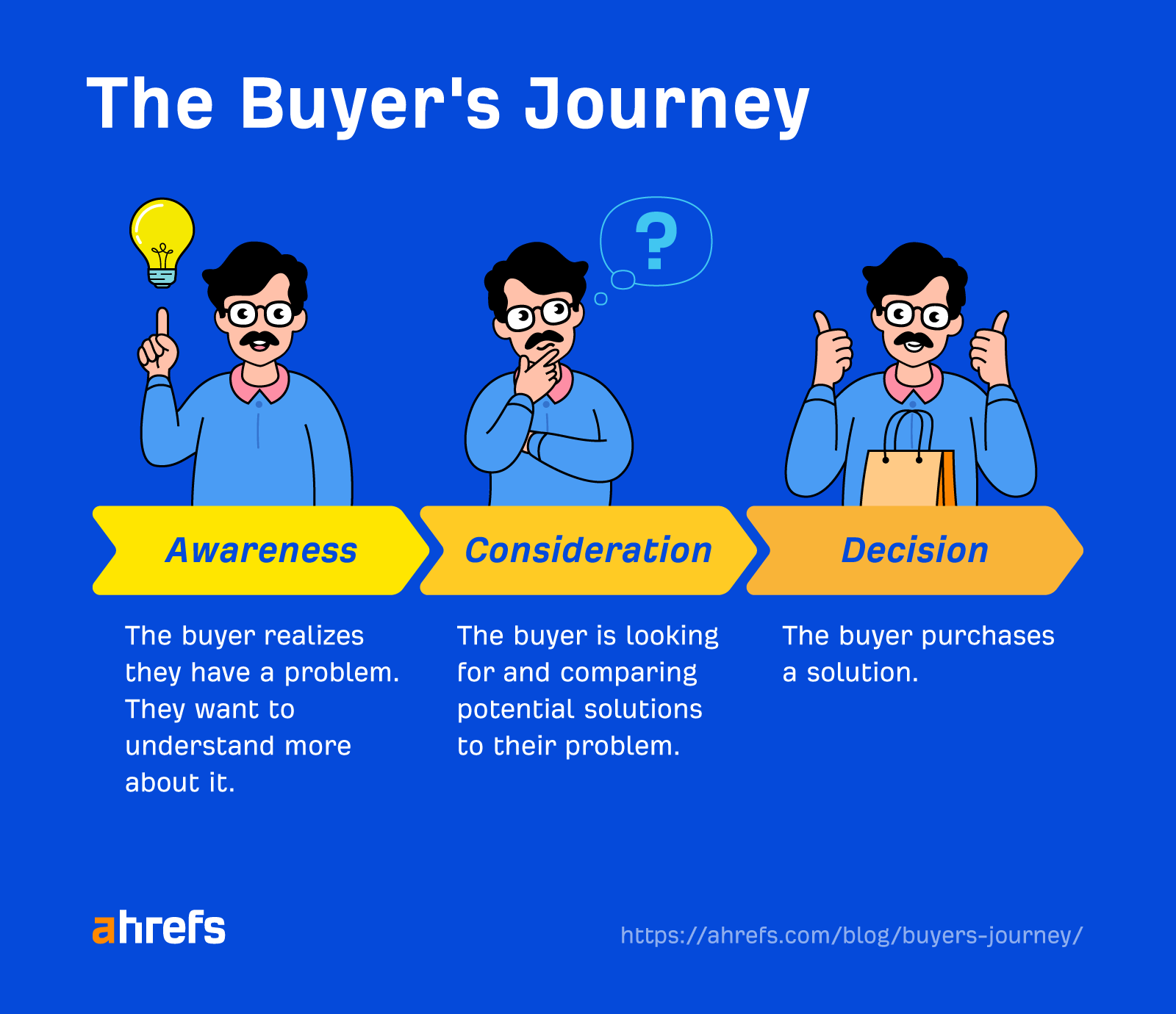
The idea is simple: The earlier people are in their journey, the less likely they are to buy your product or service (and the less value the keyword has for you).
Here’s an example for our business:
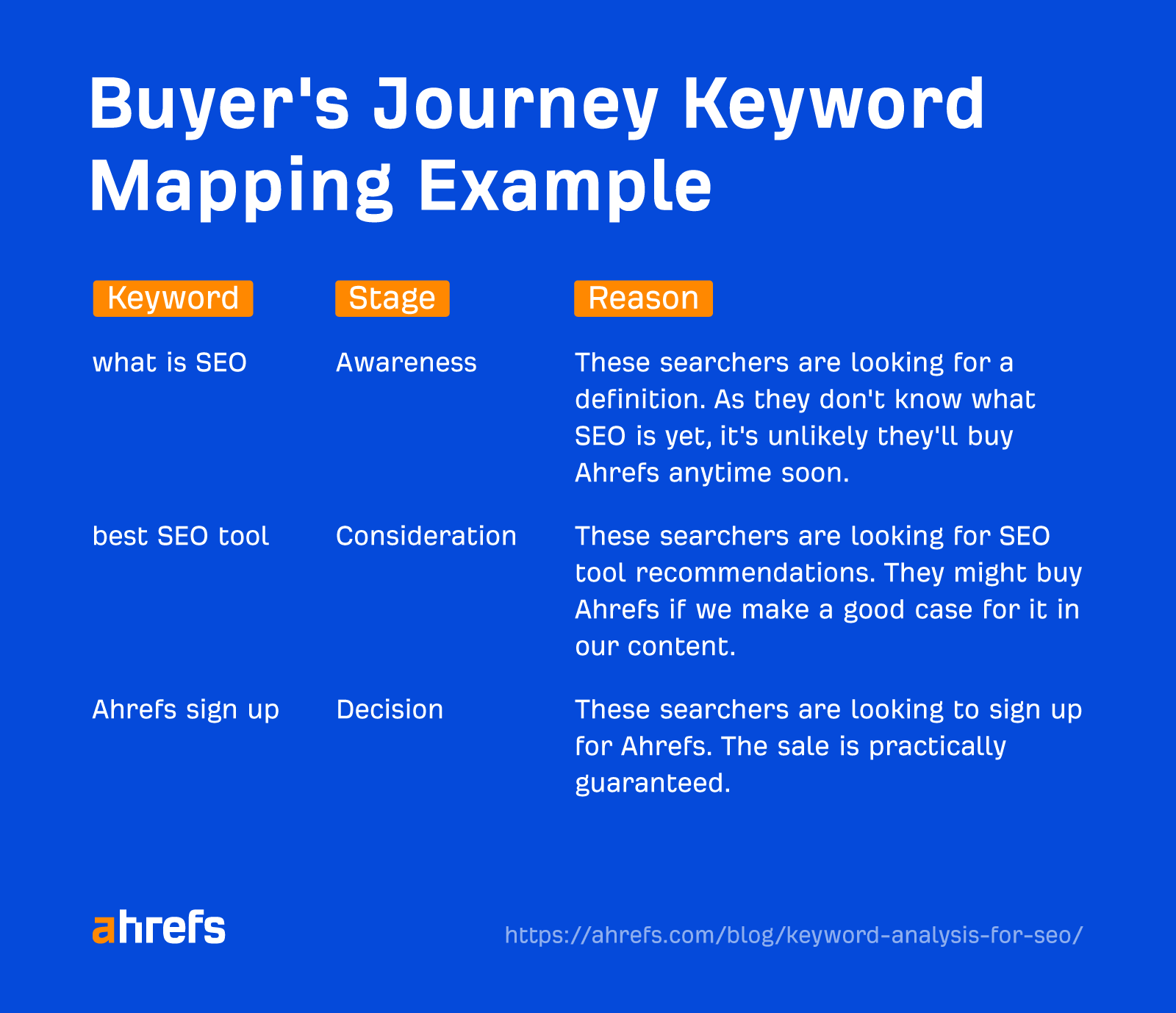
This model is OK, but it has some flaws, as Tim Soulo covers in his keyword research guide.
For that reason, we developed our own model for determining the so-called “value” of a keyword. It’s called “Business Potential,” and it scores keywords between 0 and 3—depending on how easy it will be to pitch your product or service in your content.
Here’s an example for Ahrefs:

It’s up to you which model you prefer; just make sure to keep search intent in mind when judging a keyword’s value.
Some keywords are harder to rank for than others.
Here are three questions to ask to decide how likely you are to rank for a keyword.
A. How many backlinks do I need?
Backlinks are one of Google’s main ranking factors. This means that if you’re competing against pages with lots of backlinks already, you’ll need to build lots of backlinks to your page—and that’s hard.
For a super rough idea of how many backlinks you’ll need to rank, check the hint below the Keyword Difficulty (KD) score in Ahrefs’ Keywords Explorer (or use our free Keyword Difficulty checker).
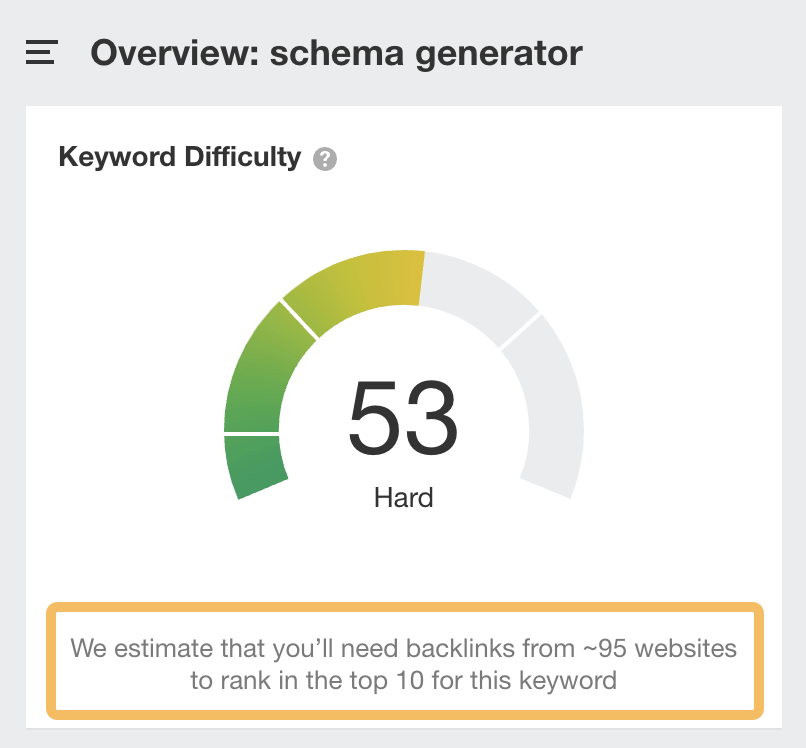
However, there are two important caveats to this number:
- It estimates how many backlinks you need to rank in the top 10, not #1 – You’ll probably need at least this many high-quality backlinks, if not more, to crack the first position.
- It doesn’t take link quality into account – Some backlinks cast stronger “votes” than others. If the top-ranking pages have lots of low-quality or mediocre links, you probably won’t need that many high-quality links to rank in the top 10.
For a much better sense of how many good backlinks you need, you’ll need to audit the backlink profiles of the top-ranking pages.
Here’s a good starting point courtesy of Glen Allsopp, founder of Detailed.com:
For example, Keywords Explorer tells us that the top-ranking page for “schema generator” has backlinks from almost 2.6K domains.

But if we plug that URL into Ahrefs’ Site Explorer, check the Backlinks report, and apply Glen’s filters (along with a couple of others to exclude links from low-authority domains without traffic), that number drops by ~66% to 879.

In this case, that’s still a lot of backlinks, but you can see how these filters could take some keywords from “I’ll never get that many backlinks” to “I think I can manage that.”
B. How “authoritative” are the websites in the search results?
Google has consistently denied using any kind of website authority metric in its ranking algorithms. Yet, when Tim surveyed his audience of SEOs on Twitter, almost two-thirds said they take it into account when analyzing their chances of ranking for a keyword.
If you want to do the same, eyeball the Domain Rating (DR) column in Keywords Explorer.
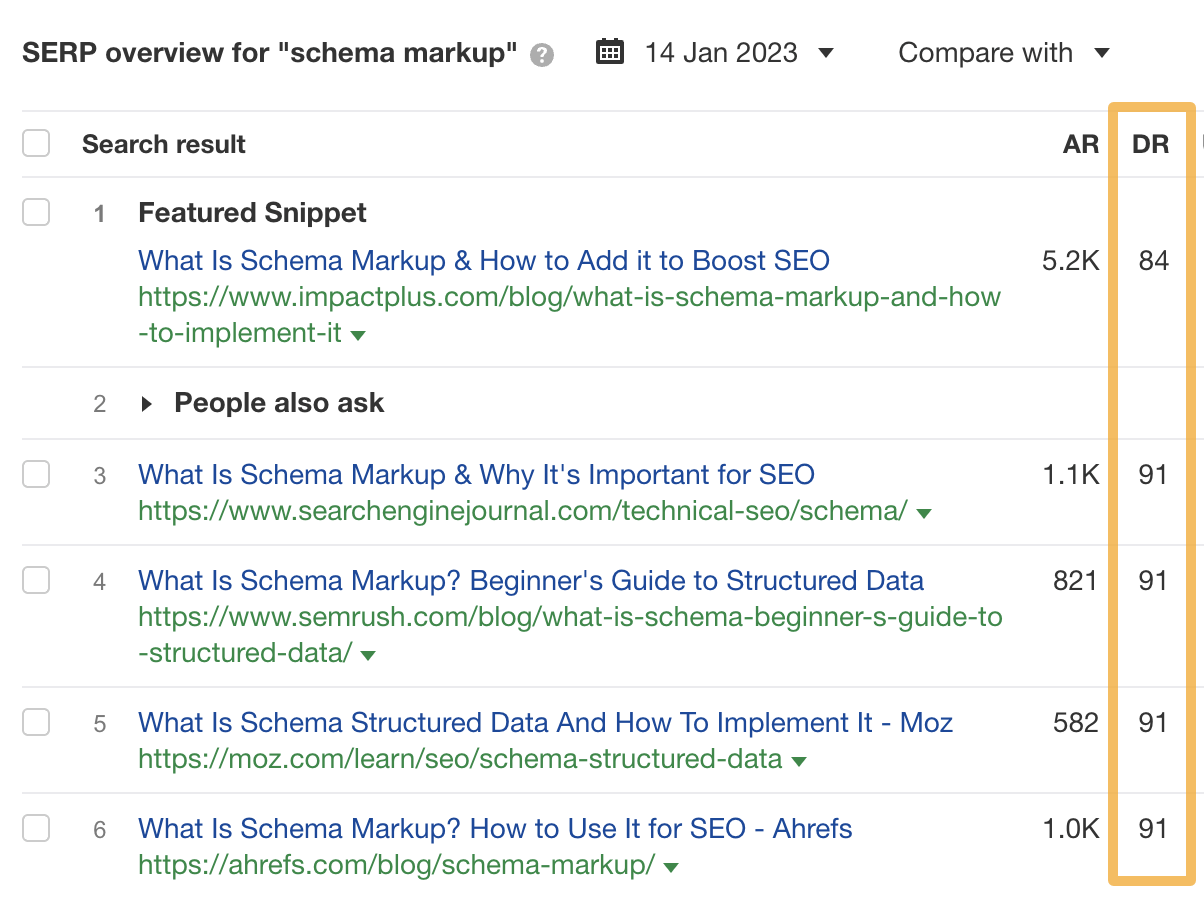
If the top-ranking websites have the same or lower DR than you (use Site Explorer or our free website authority checker to check), that’s a good sign. If their DR scores are way higher, their high authority may indirectly be helping them to rank for a couple of reasons:
They have more PR
High-authority websites have lots of high-authority pages. If they have lots of internal links pointing from those pages to the one you see ranking for your target keyword, that may be in part why it’s ranking so high.
They’re a familiar brand
People often want to see results from familiar brands, so it’s likely that Google’s algorithms take this into account either directly or indirectly. This is likely in part why you see big brands like Target and Macy’s ranking for some terms even with few backlinks.
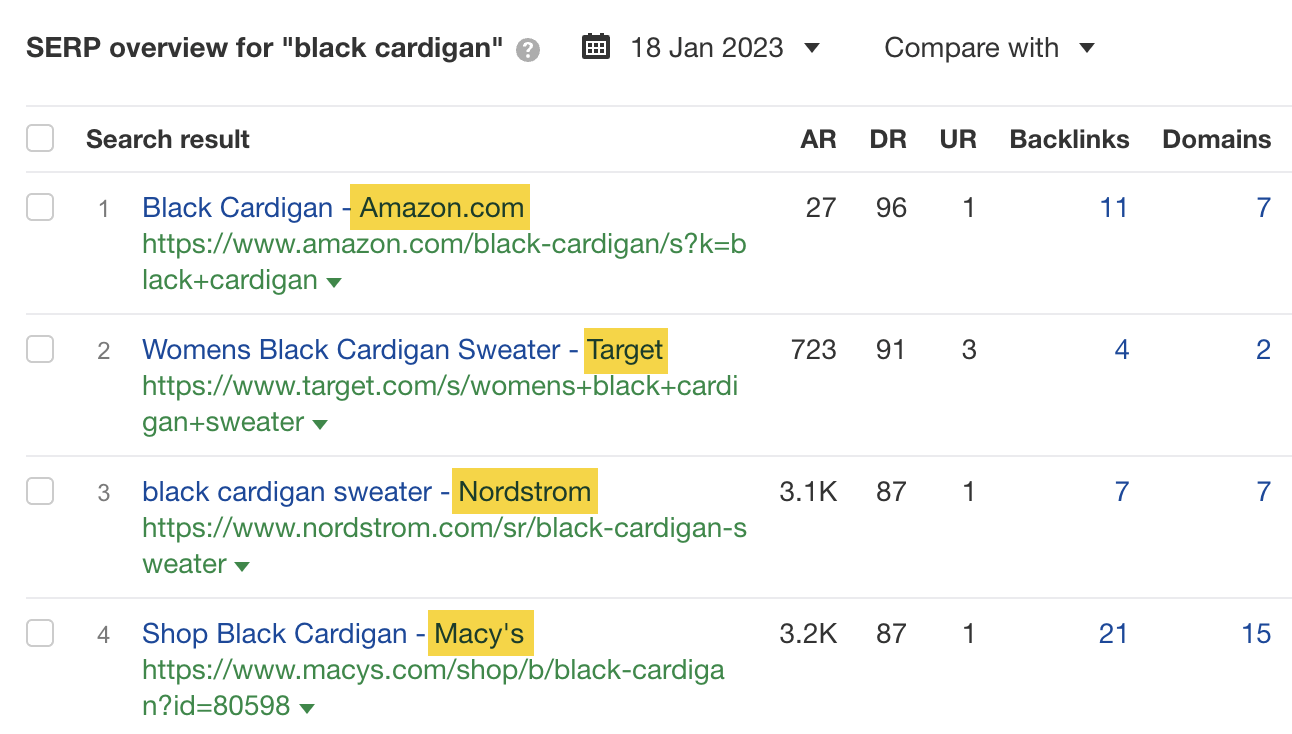
Tip: find keywords where similar caliber sites rank
- Enter a topic into Keywords Explorer
- Go to the Matching terms report
- Enter your site’s DR into the “Lowest DR” filter and choose “In top 5” from the dropdown
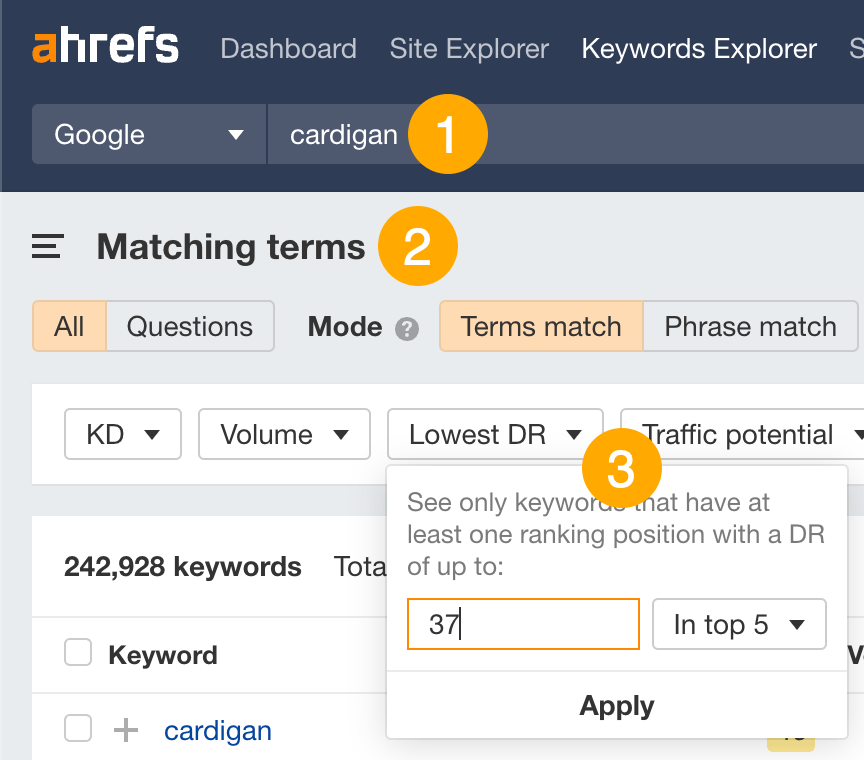
C. How good is the content?
Even if you can create the kind of content searchers are looking for with relative ease, beating the competition on quality may not be so easy.
This is important, as Google’s algorithms are designed to surface pages that demonstrate E-E-A-T, which stands for experience, expertise, authoritativeness, and trust.
Here’s a quick breakdown of these four things:
- Experience – Do you have firsthand or life experience on the topic?
- Expertise – Do you have the necessary knowledge or skill for this topic?
- Authoritativeness – Are you known as a go-to source for the topic?
- Trust – Is the page accurate, safe, honest, and reliable?
In short, the higher the top-ranking pages score when it comes to these things, the harder it’ll be to create content that stands a good chance of outranking them.
For example, the top three results for “lump on neck” are written or reviewed by doctors and registered nurses:
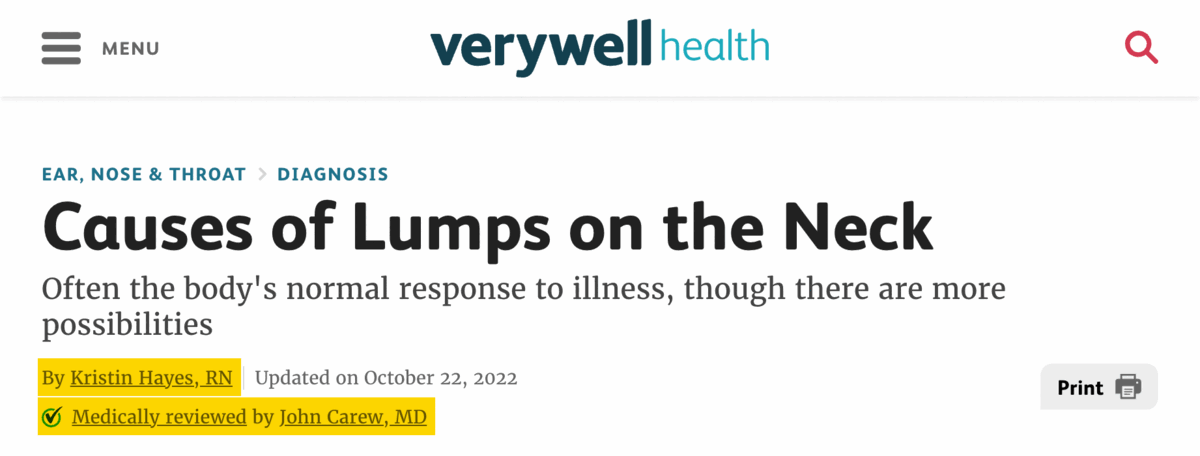
These websites are also arguably go-to sources for information about medical conditions.
As a result, unless you’re a doctor and your website has a similar reputation, you won’t be able to demonstrate anywhere near the same level of E-E-A-T in your content.
However, if you look at the top results for a keyword like “best projectors under 300,” it’s pretty obvious from the use of stock images that the authors have no firsthand experience with any of the recommended products:

This would be much easier to beat on quality. You just need to demonstrate firsthand experience.
Final thoughts
Keywords with the potential to send you lots of traffic aren’t always worth trying to rank for. They also need to make sense for your business, and you need to give searchers the best quality version of what they’re looking for to stand a chance at competing.
Got questions? Ping me on Twitter.
SEO
Google Declares It The “Gemini Era” As Revenue Grows 15%

Alphabet Inc., Google’s parent company, announced its first quarter 2024 financial results today.
While Google reported double-digit growth in key revenue areas, the focus was on its AI developments, dubbed the “Gemini era” by CEO Sundar Pichai.
The Numbers: 15% Revenue Growth, Operating Margins Expand
Alphabet reported Q1 revenues of $80.5 billion, a 15% increase year-over-year, exceeding Wall Street’s projections.
Net income was $23.7 billion, with diluted earnings per share of $1.89. Operating margins expanded to 32%, up from 25% in the prior year.
Ruth Porat, Alphabet’s President and CFO, stated:
“Our strong financial results reflect revenue strength across the company and ongoing efforts to durably reengineer our cost base.”
Google’s core advertising units, such as Search and YouTube, drove growth. Google advertising revenues hit $61.7 billion for the quarter.
The Cloud division also maintained momentum, with revenues of $9.6 billion, up 28% year-over-year.
Pichai highlighted that YouTube and Cloud are expected to exit 2024 at a combined $100 billion annual revenue run rate.
Generative AI Integration in Search
Google experimented with AI-powered features in Search Labs before recently introducing AI overviews into the main search results page.
Regarding the gradual rollout, Pichai states:
“We are being measured in how we do this, focusing on areas where gen AI can improve the Search experience, while also prioritizing traffic to websites and merchants.”
Pichai reports that Google’s generative AI features have answered over a billion queries already:
“We’ve already served billions of queries with our generative AI features. It’s enabling people to access new information, to ask questions in new ways, and to ask more complex questions.”
Google reports increased Search usage and user satisfaction among those interacting with the new AI overview results.
The company also highlighted its “Circle to Search” feature on Android, which allows users to circle objects on their screen or in videos to get instant AI-powered answers via Google Lens.
Reorganizing For The “Gemini Era”
As part of the AI roadmap, Alphabet is consolidating all teams building AI models under the Google DeepMind umbrella.
Pichai revealed that, through hardware and software improvements, the company has reduced machine costs associated with its generative AI search results by 80% over the past year.
He states:
“Our data centers are some of the most high-performing, secure, reliable and efficient in the world. We’ve developed new AI models and algorithms that are more than one hundred times more efficient than they were 18 months ago.
How Will Google Make Money With AI?
Alphabet sees opportunities to monetize AI through its advertising products, Cloud offerings, and subscription services.
Google is integrating Gemini into ad products like Performance Max. The company’s Cloud division is bringing “the best of Google AI” to enterprise customers worldwide.
Google One, the company’s subscription service, surpassed 100 million paid subscribers in Q1 and introduced a new premium plan featuring advanced generative AI capabilities powered by Gemini models.
Future Outlook
Pichai outlined six key advantages positioning Alphabet to lead the “next wave of AI innovation”:
- Research leadership in AI breakthroughs like the multimodal Gemini model
- Robust AI infrastructure and custom TPU chips
- Integrating generative AI into Search to enhance the user experience
- A global product footprint reaching billions
- Streamlined teams and improved execution velocity
- Multiple revenue streams to monetize AI through advertising and cloud
With upcoming events like Google I/O and Google Marketing Live, the company is expected to share further updates on its AI initiatives and product roadmap.
Featured Image: Sergei Elagin/Shutterstock
SEO
brightonSEO Live Blog

Hello everyone. It’s April again, so I’m back in Brighton for another two days of Being the introvert I am, my idea of fun isn’t hanging around our booth all day explaining we’ve run out of t-shirts (seriously, you need to be fast if you want swag!). So I decided to do something useful and live-blog the event instead.
Follow below for talk takeaways and (very) mildly humorous commentary. sun, sea, and SEO!
SEO
Google Further Postpones Third-Party Cookie Deprecation In Chrome

Google has again delayed its plan to phase out third-party cookies in the Chrome web browser. The latest postponement comes after ongoing challenges in reconciling feedback from industry stakeholders and regulators.
The announcement was made in Google and the UK’s Competition and Markets Authority (CMA) joint quarterly report on the Privacy Sandbox initiative, scheduled for release on April 26.
Chrome’s Third-Party Cookie Phaseout Pushed To 2025
Google states it “will not complete third-party cookie deprecation during the second half of Q4” this year as planned.
Instead, the tech giant aims to begin deprecating third-party cookies in Chrome “starting early next year,” assuming an agreement can be reached with the CMA and the UK’s Information Commissioner’s Office (ICO).
The statement reads:
“We recognize that there are ongoing challenges related to reconciling divergent feedback from the industry, regulators and developers, and will continue to engage closely with the entire ecosystem. It’s also critical that the CMA has sufficient time to review all evidence, including results from industry tests, which the CMA has asked market participants to provide by the end of June.”
Continued Engagement With Regulators
Google reiterated its commitment to “engaging closely with the CMA and ICO” throughout the process and hopes to conclude discussions this year.
This marks the third delay to Google’s plan to deprecate third-party cookies, initially aiming for a Q3 2023 phaseout before pushing it back to late 2024.
The postponements reflect the challenges in transitioning away from cross-site user tracking while balancing privacy and advertiser interests.
Transition Period & Impact
In January, Chrome began restricting third-party cookie access for 1% of users globally. This percentage was expected to gradually increase until 100% of users were covered by Q3 2024.
However, the latest delay gives websites and services more time to migrate away from third-party cookie dependencies through Google’s limited “deprecation trials” program.
The trials offer temporary cookie access extensions until December 27, 2024, for non-advertising use cases that can demonstrate direct user impact and functional breakage.
While easing the transition, the trials have strict eligibility rules. Advertising-related services are ineligible, and origins matching known ad-related domains are rejected.
Google states the program aims to address functional issues rather than relieve general data collection inconveniences.
Publisher & Advertiser Implications
The repeated delays highlight the potential disruption for digital publishers and advertisers relying on third-party cookie tracking.
Industry groups have raised concerns that restricting cross-site tracking could push websites toward more opaque privacy-invasive practices.
However, privacy advocates view the phaseout as crucial in preventing covert user profiling across the web.
With the latest postponement, all parties have more time to prepare for the eventual loss of third-party cookies and adopt Google’s proposed Privacy Sandbox APIs as replacements.
Featured Image: Novikov Aleksey/Shutterstock
-
SEARCHENGINES7 days ago
Daily Search Forum Recap: April 19, 2024
-

 WORDPRESS6 days ago
WORDPRESS6 days ago13 Best HubSpot Alternatives for 2024 (Free + Paid)
-

 MARKETING6 days ago
MARKETING6 days agoBattling for Attention in the 2024 Election Year Media Frenzy
-

 WORDPRESS6 days ago
WORDPRESS6 days ago7 Best WooCommerce Points and Rewards Plugins (Free & Paid)
-

 MARKETING5 days ago
MARKETING5 days agoAdvertising in local markets: A playbook for success
-

 SEO6 days ago
SEO6 days agoGoogle Answers Whether Having Two Sites Affects Rankings
-

 SEARCHENGINES5 days ago
SEARCHENGINES5 days agoGoogle Core Update Flux, AdSense Ad Intent, California Link Tax & More
-

 AFFILIATE MARKETING6 days ago
AFFILIATE MARKETING6 days agoGrab Microsoft Project Professional 2021 for $20 During This Flash Sale















